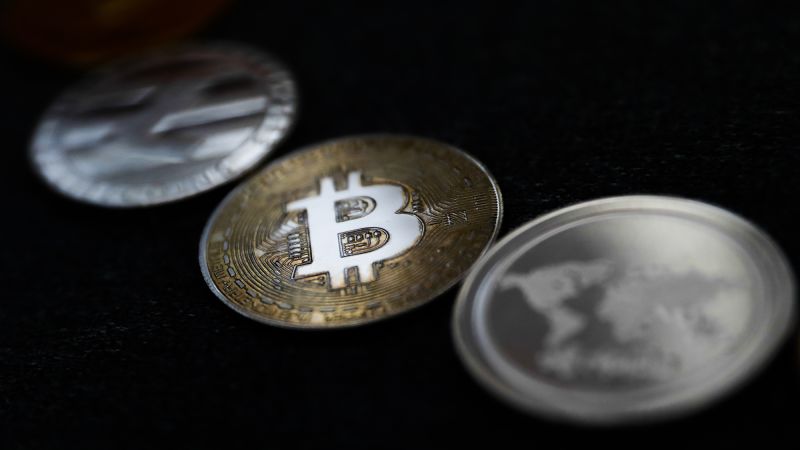The landscape of cryptocurrency has undergone substantial transformations in recent months, establishing a vibe that can only be described as electric. As the summer sun blazed, the world of crypto experienced a burst of invigorating momentum, one that cannot simply be overlooked. Bitcoin, often regarded as the cornerstone of this digital financial revolution, has catapulted past its previous record highs. Additionally, shares in various companies involved in crypto activities have blossomed like summer flowers, and Wall Street is re-evaluating its previously skeptical stance towards this burgeoning industry.
Once perceived as a mere fringe element in the world of finance, cryptocurrencies have increasingly found acceptance among a growing pool of enthusiastic investors. This shift is significantly bolstered by the supportive measures coming from the White House, which have encouraged the integration of digital assets into traditional financial frameworks. With sweeping legislative changes emanating from Washington D.C., the boundaries between cryptocurrencies and established financial institutions are becoming increasingly blurred.
A pivotal moment in this cryptocurrency journey occurred when President Donald Trump enacted an executive order, allowing digital assets, including cryptocurrencies, to be incorporated within 401(k) plans. This particular move propelled Bitcoin to a staggering all-time high of $124,000 just last week, emphasizing the potency of governmental backing in destigmatizing and legitimizing the crypto realm.
Cryptocurrency-related stocks have mirrored Bitcoin’s upward trajectory, with notable companies like Robinhood (HOOD) witnessing a staggering 200% increase in their shares this year. Similarly, Coinbase (COIN), a prominent cryptocurrency exchange, has seen its share value increase by 28%, while MicroStrategy (MSTR), a firm that specializes in Bitcoin acquisition, has experienced a 26% rise in its stock value. Even BitMine Immersion Technologies (BMNR), a company dedicated to Bitcoin mining, has seen an astonishing 625% surge in its market value. By comparison, the S&P 500 index has only managed a 10% increase during the same timeframe, and the Nasdaq 100 – comprising the top 100 technology firms in the U.S. – has gained 13%.
The excitement enveloping cryptocurrencies seems to be at an all-time high, partly fueled by robust institutional adoption and strategic partnerships. For example, Google recently secured a multibillion-dollar collaboration with TeraWulf, a Bitcoin mining corporation, further stirring investor enthusiasm. The head of disruptive technology equity research at Clear Street, Brian Dobson, articulated this phenomenon by stating that institutional engagement has propelled crypto markets far beyond what was anticipated earlier this summer.
Steve Sosnick, the chief strategist at Interactive Brokers, remarked that the current enthusiasm surrounding crypto mirrors a speculative rally, greatly fueled by heightened optimism in technology, artificial intelligence, and digital assets. He noted that the Trump administration’s avowed friendliness towards cryptocurrency has allowed markets to embrace speculative investments eagerly.
Various new players have emerged in the market as well, such as Circle (CRCL), which saw a remarkable 80% rise since its introduction on the New York Stock Exchange in June. The recent player in the market is Bullish (BLSH), a new cryptocurrency-focused company making its debut on the NYSE. Interestingly, retail investors have demonstrated excitement by becoming significant buyers of cryptocurrencies. However, a survey conducted by Bank of America showed that only 9% of global fund managers had exposure to cryptocurrencies, pointing to a divergent stance between retail enthusiasm and institutional caution.
The underlying allure within the crypto space is partly driven by the growing potential for diversification in traditional investment portfolios, as posited by Michael Green, chief strategist at Simplify Asset Management. The anticipation surrounding Bitcoin has increased significantly with the acceptance of digital currencies within the realm of 401(k) plans.
BlackRock, a leading institutional asset management firm, has also had a hand in providing momentum for Bitcoin’s ascent by launching its own Bitcoin exchange-traded fund in January 2024. Following the Securities and Exchange Commission’s approval of Bitcoin-focused ETFs, this fund has surged by 137% since its inception, becoming a primary means for investment access to Bitcoin without direct purchases.
Additionally, regulatory developments marked significant milestones in the cryptocurrency narrative; the signing of the GENIUS Act by Trump on July 18 defined regulations around stablecoins, which are cryptocurrencies pegged to assets like the US dollar, ensuring price steadiness. This stabilization gives them useful applications in digital transaction scenarios.
Despite the excitement, there are substantial voices of caution. Figures like Jamie Dimon, CEO of JPMorgan Chase, have expressed the need for greater understanding and involvement with stablecoins, reiterating a position of engagement amid increasing uncertainty regarding regulatory oversight. Furthermore, there remains a paradox, as some legislative efforts designed to support crypto innovation, such as the GENIUS Act, face criticism for lacking consumer protections. Amanda Fischer, policy director at Better Markets, indicated that the act merely endorses stablecoins without genuinely regulating them, potentially carrying over risks from the crypto space into the conventional financial system.
In conclusion, the current stage of cryptocurrency development signals












